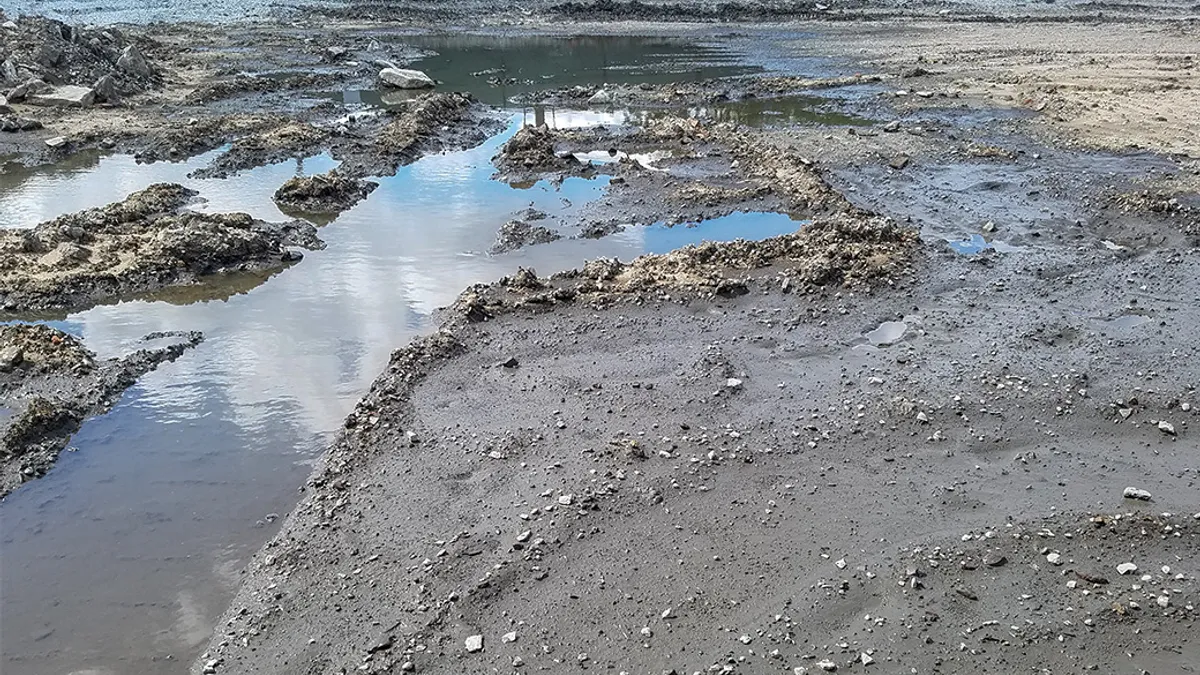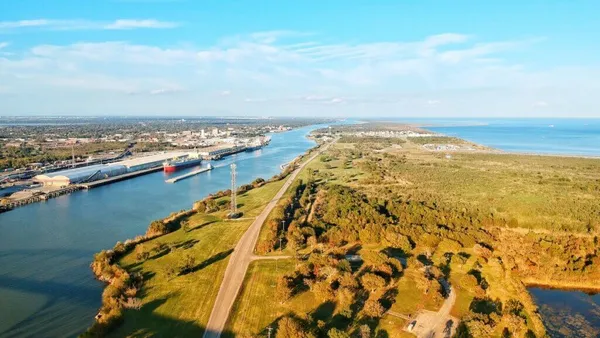When bad or soft soils are encountered on a job site, many contractors automatically turn to the same solutions they've always used. However, their "go-to" method like over-excavation, geotextiles or chemical stabilization may not be the cheapest or fastest but could actually cost them more in material costs or lost time on the job site. Many contractors are turning to geogrid technology for its consistent performance and its ability to decrease the required amount of aggregate leading to lower material costs and faster installation.

Failure with Geotextile Soil Stabilization
A contractor in Seattle was building an access road over historic marshland when the crew encountered a high water table and 10-15 ft. of soft soils. The original solution to stabilize the subgrade used a non-woven geotextile and two to three feet of rock. But the roads quickly rutted and became un-serviceable for their heavy dump trucks. Time was of the essence since the access road was critical for transporting a necessary drill rig. Lost productivity was the last thing they needed.

Many assume that geotextiles are a great solution to stop rutting because they equate high tensile strength with better in-ground performance. However, when it comes to soil stabilization, meaning the ground will endure intermittent loads applied from above (like heavy dump trucks), tensile strength won't get you very far. It has been widely documented that the ability to confine granular fill materials is the key to higher performance.

The contractor contacted Tensar who offered a soil stabilization solution using geogrid. A stabilization geogrid has apertures (openings) that allow granular materials to interlock. This interlock confines the granular particles to keep them from spreading laterally when loads are applied from above. This is why stabilization geogrid is recommended for applications such as roadways - a stiffer stabilized layer resists rutting and improves bearing capacity. A geotextile can't provide the necessary interlock which is why performance suffers.
The geogrid design not only reduced the required aggregate thickness but also allowed the use of 3/4” aggregate instead of the expensive ballast rock originally specified. Ultimately, the contractor was able to recover valuable time with this geogrid solution and kept costs similar to the original budget.
Delays with Chemical Stabilization
Chemical soil stabilization methods like cement, lime and fly ash are popular choices for strengthening poor subgrades. But, does their popularity rest on misunderstandings? The low initial cost of soil stabilization chemicals may be attractive, but other factors that go into proper installation like soil compatibility, curing time and specialized equipment needs are often overlooked. There are also steep penalties for environmental statute violations and uncertainty surrounding its long-term performance.
A contractor in El Dorado Hills, CA needed a solution to stabilize soft soils encountered on a building pad site. After reviewing options, the initial solution was to cement-treat the entire site. However, after a series of heavy rainstorms, the cement stabilization failed, with the site experiencing heavy deflections and rutting from construction traffic. The engineer needed to provide the contractor with a recommendation to stabilize the subgrade since the site would need to support heavy construction traffic and eventually heavy crane loading.

Working with the engineer, a local Tensar representative visited the site to perform DCP testing in areas experiencing rutting. Using data from the DCPs, the client was provided with several design scenarios using Tensar geogrid. Since Tensar geogrid improves the confinement of unbound aggregate materials, the ground becomes a more durable working surface. Subgrade strength-specific aggregate thicknesses ranging from 8-12” was placed on top of the geogrid. This solution minimized planned over-excavation, reducing costs and allowing the project to stay on schedule.
Geogrid offers contractors many advantages. Reduced dependence on materials, lower material and labor costs, greater flexibility in work conditions and less environmental impact are valuable advantages to consider when planning roadway construction.










